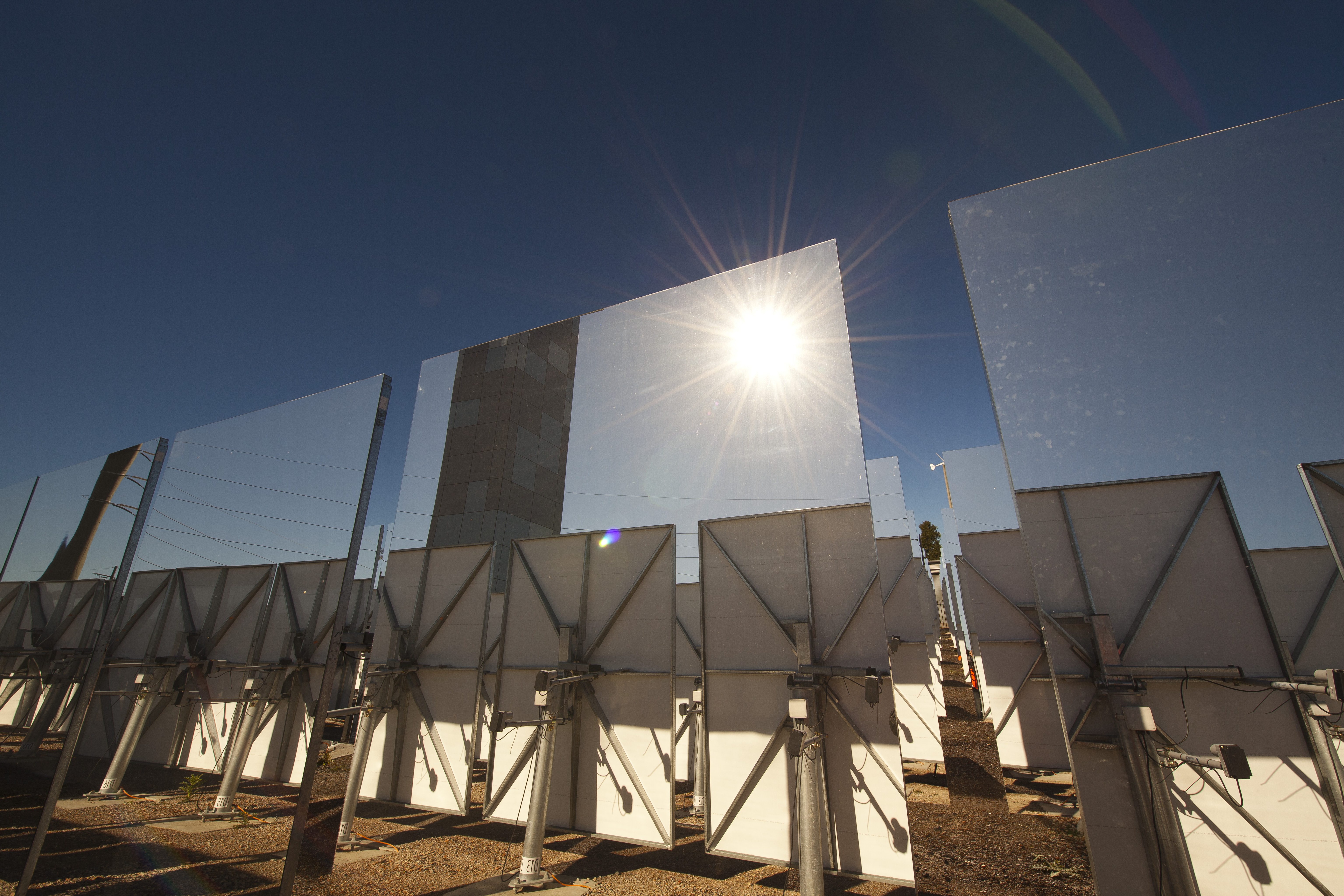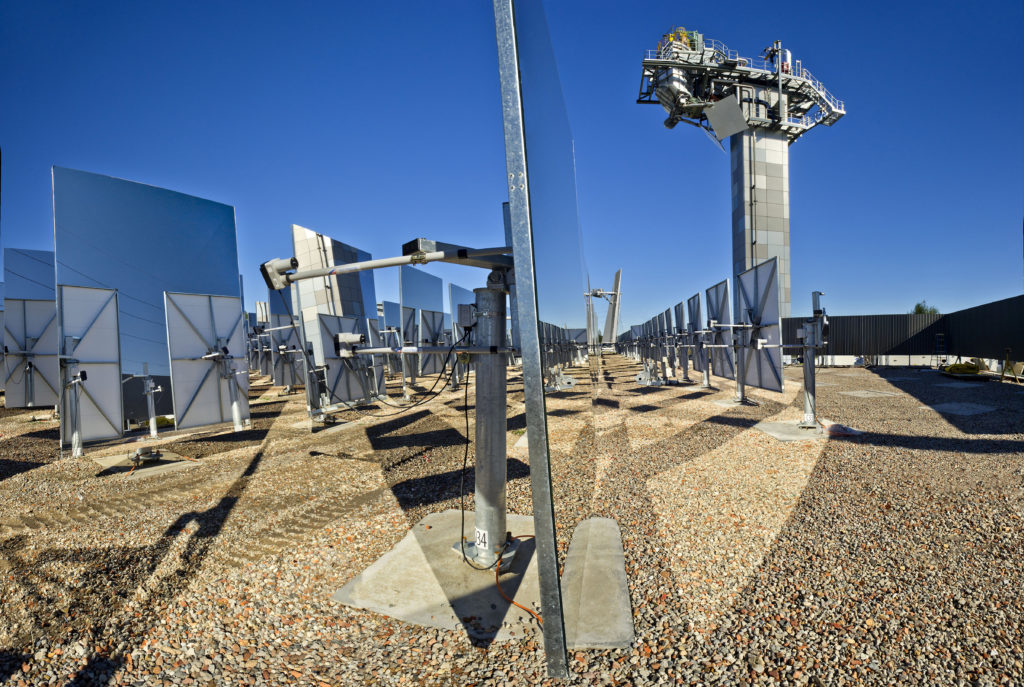
We have a sunny outlook when it comes to bringing our solar technology to the world. Our solar field in Newcastle, NSW, with sun reflected in mirror.
Did you know we’re exporting our solar technology to the world?
Fresh from setting a world record last year, our solar team continue to see great demand for our heliostat technology. We recently took this tech and our expertise to Cyprus to help the island nation with its transition to renewable energy, and now we are off to the ‘land of the rising sun’, Japan.
Mitsubishi Hitachi Power Systems (MHPS) are establishing a field of 150 heliostats in Yokohama, for running research projects using CSIRO-designed heliostats. MHPS recently received funding from the Japanese Ministry of the Environment for the purpose of reducing carbon dioxide emissions, and we are delighted that this global leader in energy has chosen our technology; it’s a great vote of confidence.
But it’s not all about success overseas, our solar tech is making a difference to the local car industry as well.
We’re not talking about solar powered vehicles (though we are a fan of solar cars, in fact we’ve developed technology for solar powered cars and tested it at the World Solar Challenge). We’re talking about this technology empowering local companies to transition from the automotive industry to renewables.
We’ve been working with Adelaide-based company, Heliostat SA (HSA) to harness the same skills and equipment they perfected making car parts to manufacture our heliostats. It’s a perfect fit for a company looking to transition its skilled workforce into a new and lucrative industry.
Our heliostat design is unique. It’s smaller than conventional heliostats, and uses an advanced control system to get high performance from a relatively inexpensive design.

Modern art or a renewable masterpiece? Both? Our solar thermal research hub in Newcastle, New South Wales.
Heliostats are of course the linchpin of solar thermal technology. Consisting of a single mirror hooked up to a computer controller, heliostats work together in large groups – or arrays – to track, reflect and concentrate the sun’s heat onto a single receiver point. It’s sort of like using a magnifying glass to focus the sun’s heat to a point, except we’re not melting toy soldiers and ants. We use this heat to generate electricity, in this instance by heating steam to supercritical (550 degree plus) temperatures to drive a turbine.
This energy can then be stored cheaply as heat in solar thermal systems, giving this technology great potential for medium to large scale power – even when the sun isn’t shining.
This project is another example a decade of solar thermal research coming out of from our energy centre in Newcastle. The continued success and international demand for our technology continues to make a strong case for exporting our solar technology and creating more value for the Australian economy.
For more information on CSIRO’s solar thermal capabilities, visit https://www.csiro.au/en/Research/EF/Areas/Solar/Solar-thermal
Keen to see how the solar tower technology works? We’ve got you covered with this supercritical solar steam video.


11th June 2015 at 10:17 am
What we really need the CSIRO to do is to invent Solar Roof Tiles.
Then our houses can be clad in a Whole of Roof Array which would do away with ugly jerry built Solar Panels and Solar Hot Water Systems cluttering up the roof line.
This could be done using a concrete tile as a substrate, spray paint it with a light sensitive polymer, fit it with two metal studs that rest on positive and negative bus bars stapled to the timber roof batten on which the tile rests and cable the bus bars away to an inverter beside the electrical power box on the side of the house.
For convenience sake lets say each house generated 1000 watts,
One thousand houses would equate to an invisible one megawatt power station that increases in size annually at a rate equal to population growth.
Generating electrical power by this method instead of burning fossile fuels would reverse global warming.
Regards
Max Bancroft
02 46475567